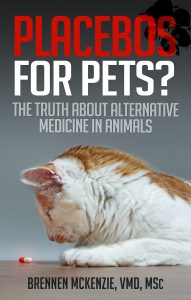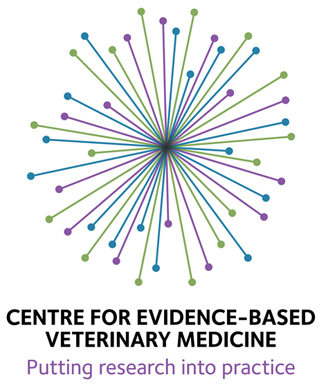One of the most common diseases in cats and dogs that I see in practice is dental disease. According to the American Veterinary Dental Society, by three years of age 70-80% of dogs and cats will have signs of oral disease. Unfortunately, many people think that dental disease is only cosmetic or not a real health problem for dogs and cats. However, in humans it is clear that poor oral health is not only a source of discomfort but a significant risk for other serious diseases. While there is little research on the subject, there is no reason to believe that the same is not true for dogs and cats. There is certainly no question that oral disease is a source of real suffering for our pets.
Unlike humans, dogs and cats rarely get cavities. This is probably due to differences between the bacterial flora that normal inhabits human mouths and that which lives in the dog and cat mouth. Genetics also likely plays a significant role, as this is one of the most important determinants of susceptibility to dental disease in humans. Most dental disease in dogs and cats is periodontal disease, inflammation of the gums and the tissues that hold the teeth in the jaw. Periodontal disease is responsible for pain, trouble eating, tooth loss, and potentially diseases in other organs.
Periodontal disease begins with the accumulation of plaque, a biofilm containing proteins and oral bacteria. Plaque, and the subsequent mineralized material known as calculus or tartar, initiates a cycle of inflammation in the periodontal tissues which can ultimately lead to severe pain, swelling, and tooth loss. Periodontal disease can be treated, but this requires general anesthesia and often involves extraction of diseased teeth, so of course prevention is preferred to treatment whenever possible.
While genetic factors are significant in determining if an individual is likely to develop periodontal disease, these are not readily controlled, so the focus of preventing periodontal disease is primarily on reducing plaque and calculus accumulation and maintaining healthy periodontal tissues. The most effective method for preventing periodontal disease is regular, proper home care. Brushing, in particular, is a great way to remove plaque and prevent oral disease, and many dogs and cats will tolerate it well if it is introduced when they are young.
In addition to brushing, and especially for those pets that do not tolerate it, there are innumerable products marketed for preventing periodontal disease. Most of these have little to no supporting evidence for their claims. Whenever considering using one of these products, it is useful to look for the Veterinary Oral Health Council (VOHC) seal of approval. The VOHC is an independent organization which requires reasonably rigorous, scientific evidence demonstrating efficacy in preventing plaque (which is most important) and calculus accumulation (which is somewhat less useful in preventing periodontal disease) in order to obtain their seal. Such products, including oral rinses and gels, treats, and chews, are not a substitute for brushing or regular veterinary prevention and treatment measures. But there is good reason to believe that if they have obtained VOHC approval then they have some value.
One of the most common actions recommended, by veterinarians and others, to minimize the development of oral disease is feeding dry commercial pet diets. It is often argued that chewing on kibble cleans the teeth and slows the development of periodontal disease. However, there is some reason to doubt this claim. Most dry diets made for dogs and cats do not require chewing, and the kibble is often swallowed whole. And typical kibble is very easily broken apart, so it does not seem likely that it is very effective in cleaning teeth, especially under the gum line, where plaque and calculus cause the most inflammation and disease. And at least one study looking at the effect of diet and chewing materials on oral health did not find that feeding a dry diet only was associated with any less periodontal disease than other feeding methods.
Of course, there is also no evidence that dry diets are a significant cause of dental disease, as is often alleged by proponents of other feeding methods, and there is no evidence to support claims that feeding canned, homemade, or raw diets is better for oral health. And while there is some evidence that bones, like any abrasive chewing material, can help clean teeth, the many risks of bones, including fractured teeth and potentially life-threatening injuries to the gastrointestinal tract, likely outweigh any benefits. So while dry diets in general may not be of benefits in terms of preventing periodontal disease, this does not automatically mean that the alternatives to commercial dry foods are any better.
In fact, a new study suggests that the opposite might be true, and that dry commercial diets may have some value in preventing dental disease after all.
Catherine Buckley, Alison Colyer, Michal Skrzywanek, Katarzyna Jodkowska, Grzegorz Kurski, Jerzy Gawor, Michal Ceregrzyn.. The impact of home-prepared diets and home oral hygiene on oral health in cats and dogs. British Journal of Nutrition (2011), 106: S124-S127.
This survey of thousands of dogs and cats seen by veterinarians in Poland identified brushing and the use of dental treats as significant factors reducing the risk of oral disease. No surprise there. However, the results also showed that homemade diets were associated with an increased risk of oral disease and that exclusive feeding of dry diets reduced the risk of oral disease.
The present study aimed to elucidate the influence of feeding home-prepared (HP) food v. commercial pet food on oral health parameters in these animals and to investigate the effect of home oral hygiene on oral health. The study surveyed 17 184 dogs and 6371 cats visiting over 700 Polish veterinary surgeries in 2006–7 during a Pet Smile activity organised by the Polish Small Animal Veterinary Association. All animals underwent conscious examinations to assess dental deposits, size of mandibular lymph nodes and gingival health. An oral health index (OHI) ranging from 0 to 8 was calculated for each animal by combining examination scores, where 0 indicates good oral health and 8 indicates poorest oral health. Information was collected on age, diet and home oral hygiene regimens. There was a significant effect of diet on the OHI (P < 0·001) whereby feeding the HP diet increased the probability of an oral health problem in both cats and dogs. There was a significant beneficial effect of feeding only commercial pet food compared with the HP diet when at least part of the diet was composed of dry pet food. Daily tooth brushing or the offering of daily dental treats were both effective in significantly reducing the OHI in both cats and dogs compared with those receiving sporadic or no home oral hygiene. Feeding only a dry diet was beneficial for oral health in cats and dogs. Tooth brushing and the offering of dental treats were very effective in maintaining oral health, provided they were practised daily.
Obviously, this is only a single study, and it is impossible to evaluate the methodological quality of it from the abstract alone. Many details, such as what kind of homemade diets were included and whether there might be differences among them, are not. However, it does provide at least a bit of evidence against the often made claim that dry diets have no value in preventing dental disease or that homemade diets, such as raw or BARF diets, are superior.
There are undoubtedly many good reasons to consider alternatives to feeding only commercial dry diets. Specific medical conditions may require diets of a composition or consistency other that dry kibble. And while much of the propaganda about the health risks of commercial dry diets for cats is irrational and not supported by evidence (e.g. 1, 2), there is some reason to believe that moist diets may be superior for cats in some respects. So this study is by no means a reason to recommend feeding exclusively dry commercial diets. The overall nutritional needs of each individual must be assessed, not simply the question of dental disease.
However, for those patients, especially small breed dogs, at high risk for severe dental disease, it is important to consider the potential value of commercial dry diets in preventing the significant health risk. Diets that have obtained the VOHC seal for plaque prevention, in particular, should be considered a legitimate tool in the management of periodontal disease, and the overall health and well-being, of individual patients.









